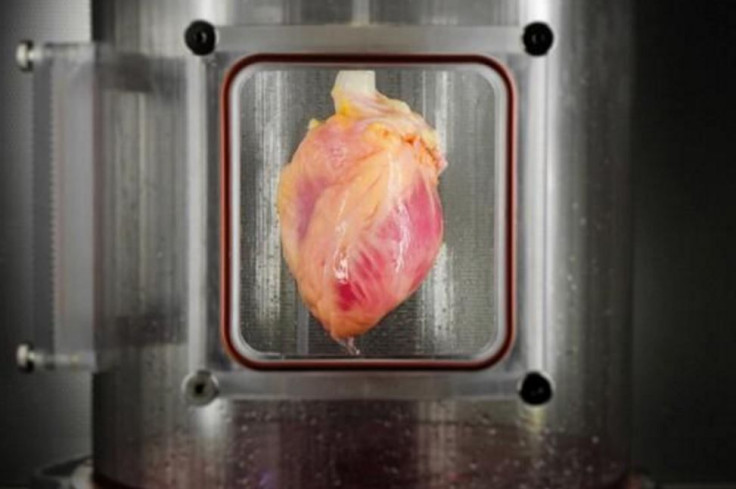Bioengineering Breakthrough: Human Heart Successfully Created From Stem Cells May Be Less Likely to Be Rejected

The problem with needing a new organ is that they aren’t exactly readily available. Living humans need their organs, and when a person dies, their organs often can’t be used. There are currently 4,154 people waiting for a heart transplant in the United States, and many of them won’t survive. There is a shortage of donors, and there’s no way to manufacture a human heart … right?
A team of researchers from Massachusetts General Hospital’s Center for Regenerative Medicine and Harvard Medical School may have just changed that — the group has grown a beating human heart in a lab. Previously, scientists produced 3-D heart segments from biological material. These scaffolding structures didn’t have any actual heart cells, but formed a good foundation on which heart tissue could grow. Now, the Massachusetts team has taken the concept and combined it with stem cells to yield fantastic results.
Viable human heart transplants are tricky business. The main issue, aside from a lack of donors, is that a replacement heart may not be compatible with the patient’s body, which could reject the organ altogether. While it is impossible to remove all foreign aspects from a donor heart, a bioengineered heart is a different story.
For the study, researchers took 73 human hearts that were unsuitable for transplantation and stripped them of the donors’ cells, effectively preventing a host from rejecting them. The researchers were left with a scaffold not unlike the 3-D printed ones. They then reprogrammed the patient’s skin cells into pluripotent stem cells, which have the ability to transform into almost any type of cell in the body.
The team induced the stem cells into becoming two types of heart cells which grew readily on the scaffold when bathed in nutrients. After two weeks of the bath, the cells had changed into “immature cardiac tissue,” which, when stimulated electrically, began to beat. Though this is an achievement on its own, the most important characteristic of the heart is that the patient’s body would accept it since it was made from familiar cells.
“Among the next steps that we are pursuing are improving methods to generate even more cardiac cells,” said Jacques Guyette, a biomedical researcher at the Mass General Hospital Center for Regenerative Medicine and lead author of the study, in a statement.
Source: Guyette J, Charest J, Mills R, Jank B, Moser P, Gilpin S, et al. Bioengineering Human Myocardium on Native Extracellular Matrix. Circulation Research. 2016.
Published by Medicaldaily.com



























